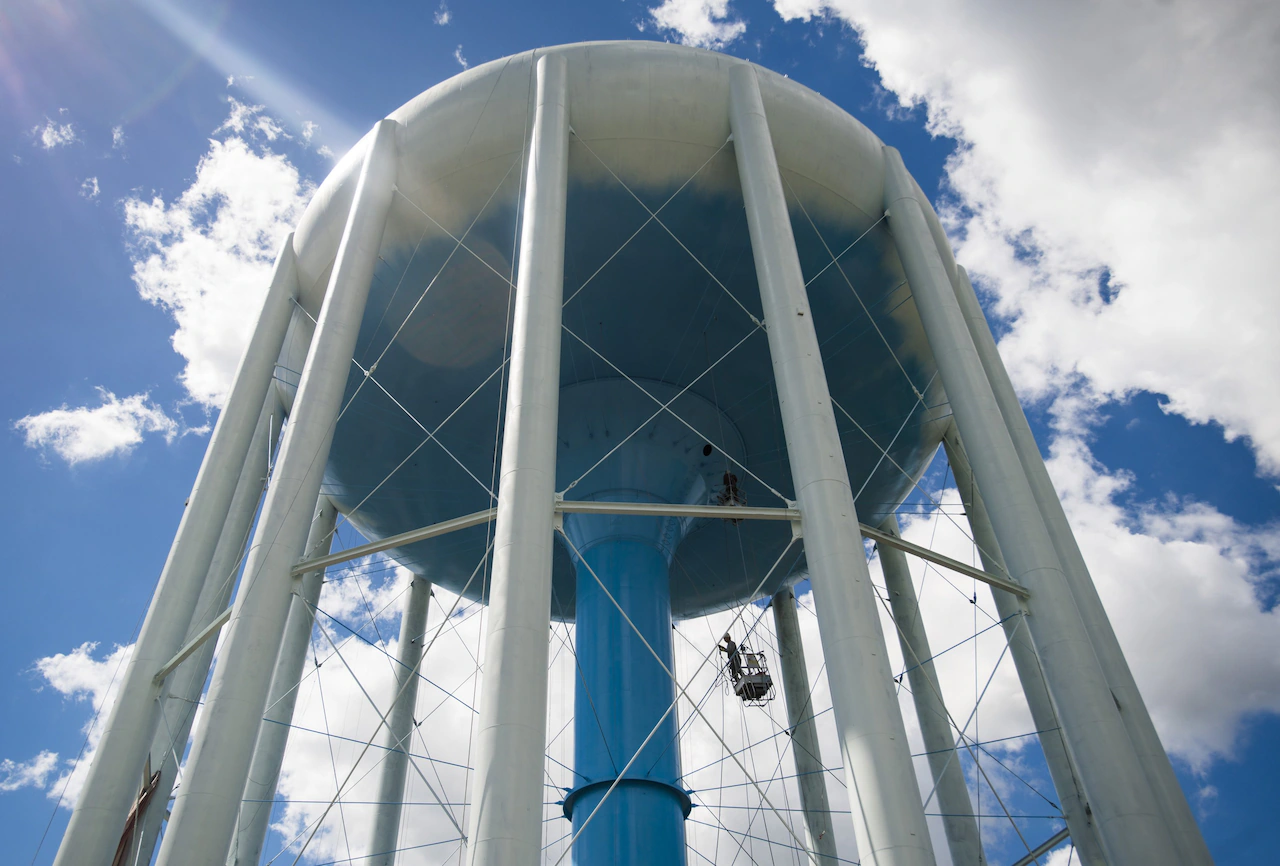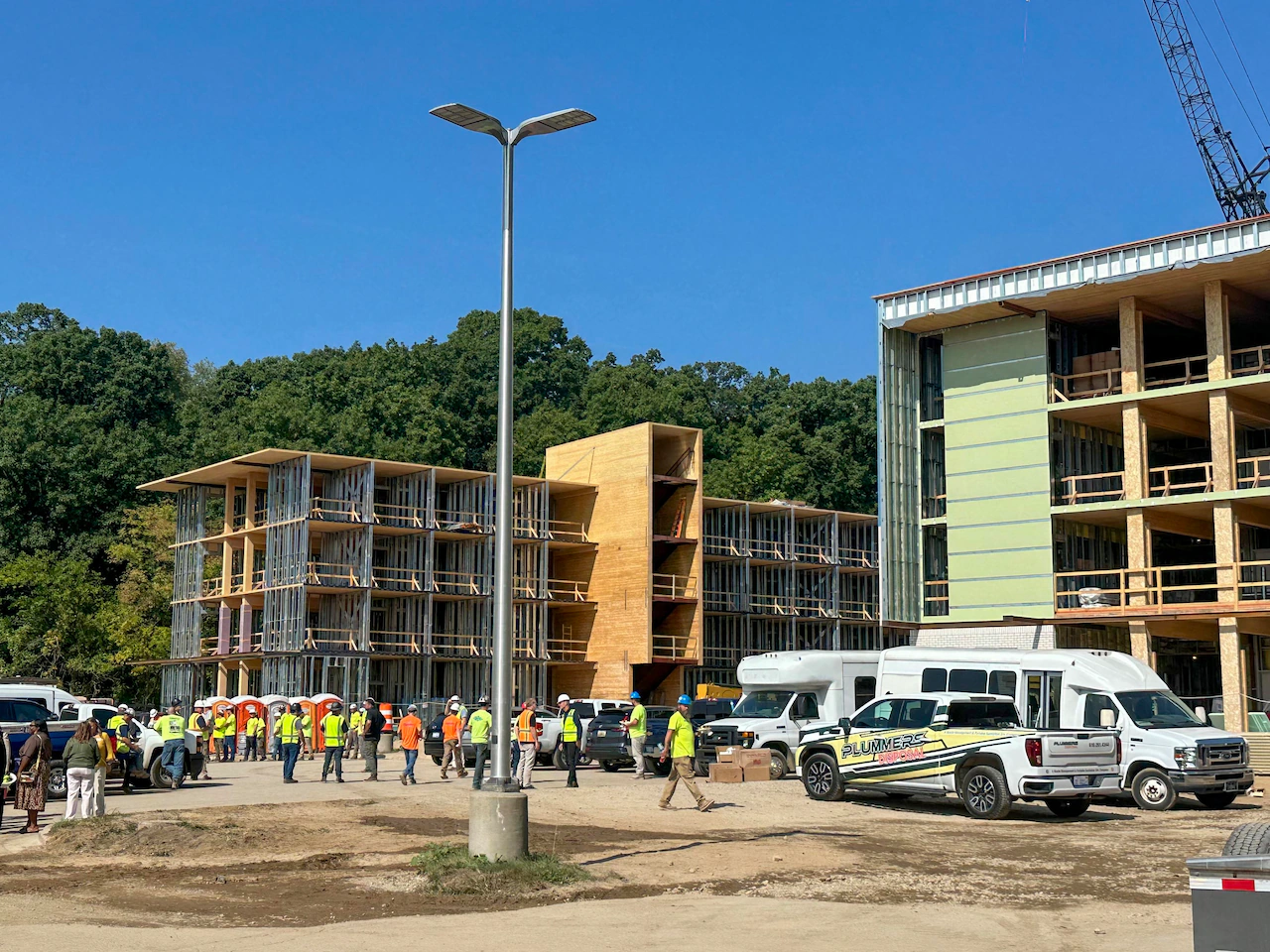
Many residents across the greater Grand Rapids area are seeing a stark hike in their water rates this year.
Georgetown Township residents recently complained to their elected officials about a sudden 55% rate hike that went into effect this summer, with some residents saying their bills have exceeded $600.
Other communities saw similar increases this summer, like Kentwood, where water rates increased by 49%, and Blendon Township, which raised its rates by 64%.
What’s behind the recent rate hikes? It boils down to costs increases being driven by massive infrastructure upgrades needed to accommodate higher water use by some communities across West Michigan.
There are also rising post-COVID operating costs at play.
Here’s why you may be seeing an increase to your water bill this year.
Rising wholesale costs are being passed down to local communities.
For a dozen municipalities in West Michigan, increased water costs are being passed down by their wholesale supplier: The city of Wyoming.
Wyoming’s water supply system serves approximately 230,000 people across Wyoming and other wholesale customer communities in Kent and Ottawa counties, according to its website. Those customers include Zeeland, Park, Olive, Blendon, Holland, Georgetown, Jamestown, Gaines and Byron townships, and the cities of Hudsonville, Grandville, and a portion of Kentwood.
Wyoming sets the budget for its water infrastructure, which determines the wholesale rate passed down to local governments. Each municipality then adds its own costs for local infrastructure, maintenance, and administration to choose a final retail rate for residents.
However, Wyoming now has some massive, long-deferred capital infrastructure projects coming down the pipeline that are causing the wholesale supplier to raise its costs.
The city has identified $606 million in planned capital water system improvements over the next decade, Aaron Vis, the city’s director of public works, told the Wyoming City Commission at a recent work session.
Officials say those improvements are being driven by increased water usage by residents across West Michigan. Some communities tend to use more water for things like lawn irrigation in the summer, leading to increased demand on the system.
“We build these large plants, these big pipes and pumps primarily because we all want to sprinkle our lawns at the same time in the summer,” said Patrick Staskiewicz, public utilities director for the Ottawa County Road Commission, which negotiates the wholesale agreement with Wyoming on behalf of the nine customer municipalities in Ottawa County.
Wyoming’s water infrastructure consists of a water plant and intake on the lakeshore, two main transmission lines that carry the water to Wyoming and a water tank.
The Michigan Department of Environment, Great Lakes and Energy requires wholesale suppliers like Wyoming to expand their water systems if usage starts to exceed 80% of its water supply capacity, said City Manager John Shay. Wyoming has reached that point and needs to upgrade its infrastructure.
But it’s not just the infrastructure upgrades that are causing costs to rise — operating expenses and supply chain costs have also risen drastically over the last five years since the COVID-19 pandemic, Staskiewicz said.
From 2009 to 2020, operating and maintenance costs increased at an average rate of 2% per year for Ottawa County communities, Staskiewicz said. Since 2020, operating cost increases have averaged 8.8% per year, he said.
“COVID caused chemical costs to go way up,” Staskiewicz said. “The supply chain (costs increased), so all materials went up, and then our electric went up, and then our labor costs went up, and so all of these were building a little bit, and they all let loose at the same time. And now, we’ll have a tariff bump.”
Between rising supply chain costs and long-deferred capital expenses, Staskiewicz called it a “double whammy” of increased costs being passed down to local communities.
What about the city of Grand Rapids?
Not everyone in West Michigan is seeing such drastic water rate increases.
Late last year, the city of Grand Rapids approved a 4.34% increase for its residents for 2025. It also increased water rates by an average of 2.8% for its surrounding wholesale and retail customers, which include municipalities like Walker, Cascade Township, Grand Rapids Township, East Grand Rapids, Ada Township and others.
Grand Rapids Utility Financial Officer Tai Verbrugge said retail customers, like Cascade Township, have infrastructure owned and maintained by the city of Grand Rapids, which means Grand Rapids sets those customers’ water rates. The city is intentional about implementing small, consistent increases for its retail customers to avoid large spikes, he said.
For the city’s wholesale customers, like Ada Township and East Grand Rapids, the city has no control over how those customers pass costs on to their own residents.
Verbrugge said overall water consumption is not a concern, as the system has excess capacity and is even adding new wholesale customers. To fund capital projects, the city proactively uses a state revolving fund that provides low-interest loans with principal forgiveness.
Wyoming’s water rate structure could change in the future.
Vis, the city’s public works director, said Wyoming is in talks with Ottawa County about changing its water rate structure to better manage water demand. Currently, Ottawa County is treated as a single entity, so water rate increases are distributed equally to all of Wyoming’s customers in the county.
However, the city is considering a new fee structure that would determine water rates by local usage. The new contract would assess costs for each of the nine municipalities within the county independently, based on their unique water usage and impact on the system, as well as projected future growth.
Vis said the new contract would include a “withdrawal limit,” or a “speed limit,” that would be established for each community, restricting the amount of water they can withdraw per day or hour. This is intended to manage demand and defer expensive, large-scale capital projects, he said.
Municipalities that exceed their withdrawal limit will face financial penalties, and the money from these surcharges could be set aside to offset Wyoming’s increased operational costs or to fund future capital expenses for the entire system, Vis said. This structure could also incentivize communities to build their own water storage.



